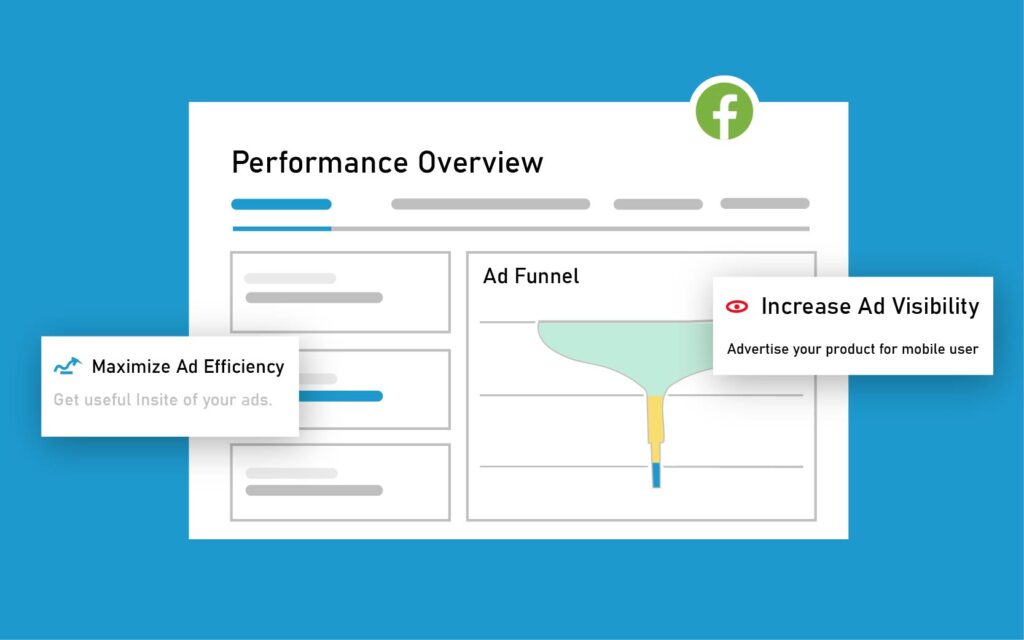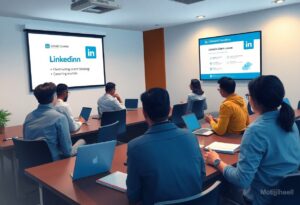
LinkedIn Client Hunting Course in Mohakhali
LinkedIn is more than just a platform for networking; it’s a powerful tool for finding

If you want my team to manage your good marketing for you, click here
Course participants will discover the art of leveraging LinkedIn client hunting to attract effectively. In today’s digital age, it’s imperative to understand how to optimize your profile and engage with your target audience on this powerful platform. I will guide you through proven strategies to enhance your outreach and build meaningful connections. Whether you’re an entrepreneur or a professional looking to expand your network, this course will equip you with practical skills you can implement immediately. Join me as we unlock the full potential of LinkedIn for your business success.
For aspiring professionals, leveraging LinkedIn effectively can transform your approach to client acquisition. It serves as a dynamic platform where you can showcase your expertise, connect with potential clients, and build lasting relationships. Understanding the nuances of LinkedIn allows you to position yourself as an industry leader and opens doors to endless opportunities for collaboration and growth.
Along with its vast network, LinkedIn provides a unique environment for business connections. You can easily interact with decision-makers and peers in your industry, expanding your professional horizons. By utilizing LinkedIn, you can tap into an extensive array of resources and insights, making it an indispensable tool for anyone serious about growing their client base.
After you understand the power of LinkedIn, the next step is to optimize your profile for success. Your profile acts as your business card, showcasing your skills and expertise to potential clients. A polished and professional profile enhances your visibility and credibility, which in turn attracts more opportunities.
The optimization process involves several key strategies. I recommend crafting a compelling headline that clearly defines your niche, along with a professional profile picture that conveys approachability. Include a well-written summary that highlights your achievements and services. Make sure to use relevant keywords that your potential clients might search for, ensuring your profile appears in their queries. Finally, regularly engaging with content and connections on the platform keeps your profile active and visible in the eyes of prospective clients.
If you’re serious about expanding your client base through LinkedIn, defining your target audience is an necessary step. Understanding who your ideal clients are helps you tailor your approach and messaging, ensuring you connect with the right professionals who will benefit from your services. In this course, I’ll guide you through identifying the characteristics and needs of your ideal clients.
Ideal clients are those who derive the most value from your services and align closely with your offerings. By pinpointing their demographics, industry, and specific pain points, I equip you with insights to refine your strategy. This focus allows you to engage more effectively and increase conversion rates.
Targeting the right audience on LinkedIn involves leveraging its advanced search features to filter potential clients based on criteria like location, industry, and job title. This allows you to be strategic in your outreach, ensuring you are connecting with decision-makers and relevant professionals within your desired market.
At the heart of effectively utilizing LinkedIn’s search features lies the ability to customize your search queries. I suggest using Boolean operators to combine or exclude terms, which can significantly narrow down your results. Additionally, exploring LinkedIn Groups related to your industry allows you to discover potential clients who are already engaged in discussions pertinent to your expertise. By refining your search process, you can efficiently find and connect with those who are most likely to seek your services.
Any successful approach to client engagement demands a blend of personalization and strategic outreach. By actively seeking to understand your potential clients’ needs and challenges, you can create meaningful connections that resonate. Engaging potential clients isn’t just about sending messages; it’s about adding value and building relationships that can lead to future opportunities.
With an effective connection request, you set the tone for your relationship. It’s important to personalize your message, mentioning common interests or mutual connections. This helps you stand out in a sea of generic requests and shows that you are genuinely interested in connecting on a professional level.
By sharing insightful and relevant content, you position yourself as a thought leader in your field. This not only attracts potential clients but also showcases your expertise. Engaging through content helps create conversations and encourages connections based on shared interests and knowledge.
Clients appreciate when I share informative articles, industry trends, or my own insights that address their pain points. When I take the initiative to curate or create content that aligns with their interests, it can spark discussions and build trust over time. Your content becomes a bridge that connects you and your potential clients, fostering relationships that lead to meaningful outcomes.
Your ability to follow up effectively and build lasting relationships can significantly influence your success in client hunting. By implementing tailored strategies, you create an environment of trust and understanding, which encourages potential clients to engage with you further. This chapter will uncover imperative techniques to enhance your interaction and establish a solid network, strengthening your presence on LinkedIn while effectively connecting with your target audience.
One of the most impactful ways to follow up with potential clients is by employing effective communication techniques. Staying clear, concise, and professional in your messages helps you to convey respect for the recipient’s time and encourages more engaging responses. Utilizing a friendly yet formal tone can create a welcoming atmosphere and set the stage for a productive dialogue.
Effective communication is the foundation of maintaining professional relationships that grow over time. By consistently providing value and checking in regularly, you reinforce your commitment to the connection. Take the time to personalize your communication, which adds depth to your interactions and fosters genuine rapport.
Hence, nurturing a professional relationship is not a one-time effort but an ongoing process. I suggest scheduling periodic follow-ups, sharing relevant content, or even just a simple message checking in. By doing so, you remind your contacts of your presence and keep the lines of communication open. This dedicated approach increases the likelihood of future collaborations and referrals, solidifying your network’s strength and relevance in the long run.

Many professionals overlook the power of LinkedIn Groups and Communities in their client hunting strategy. These spaces offer opportunities to connect with like-minded individuals, share valuable insights, and showcase your expertise. By engaging authentically, you can expand your network and potentially attract new clients who resonate with your professional journey.
Groups dedicated to your industry or interests can be a goldmine for networking. Start by searching for keywords related to your field, interests, or target audience. Joining these groups allows you to tap into a community that shares common goals and challenges, creating a platform for meaningful connections.
By engaging actively in discussions, sharing your knowledge, and providing solutions, you elevate your visibility within those groups. Regular participation not only positions you as an expert but also fosters trust among group members, making it easier for potential clients to reach out.
Finding the right balance of participation is key. Start by commenting on posts, answering questions, and sharing articles that reflect your expertise. As you become more comfortable, consider starting your own discussions or sharing relevant case studies. This consistent involvement will enhance your profile visibility and establish you as a go-to resource within the community.
All effective client hunting strategies hinge on the ability to measure success and refine your approach. In the world of LinkedIn, understanding what works and what doesn’t is vital for sustaining growth. By continuously evaluating and adjusting your techniques based on performance, you’ll be able to hone in on your ideal clients and enhance your outreach efforts.
Any successful LinkedIn strategy must be grounded in key performance indicators (KPIs). These metrics include connection requests sent, response rates, engagement rates on your posts, and the number of leads generated. Tracking these metrics allows you to gauge the effectiveness of your efforts and make informed decisions on where to focus your resources.
Track your results diligently. As you analyze the metrics from your LinkedIn activities, you’ll often find patterns that reveal what works best for you and what doesn’t. If a particular type of content is resonating with your audience, capitalize on that, and create similar posts. Conversely, if certain strategies yield low engagement rates, it’s time to pivot and explore new approaches that can drive better results.
Measuring success involves a continual cycle of testing, learning, and adapting. I’ve found that regularly reviewing my metrics helps me stay ahead of the curve. For instance, when I see a dip in engagement, I take a step back to analyze what might have changed. Adjusting my messaging, experimenting with different formats, or tailoring my content to match my audience’s interests has led to improved outcomes. This adaptive mindset is necessary for long-term success in client hunting on LinkedIn.
Hence, as you explore the LinkedIn Client Hunting Course in Agargaon, I hope you realize the immense potential LinkedIn holds for your professional growth. By applying the strategies and techniques taught in this course, you can effectively connect with potential clients and expand your network. Your commitment to learning and adapting will play a significant role in your success. I encourage you to take bold steps in leveraging this platform, as the right connections can transform your professional landscape.
It is really a win-win situation 😲 for you to join the “Digital Wit Academy” Facebook group and gain the most updated information about different digital marketing strategies.

Kamrul Hassan is the founder and CEO of Digital Wit Academy. As you know, Digital Wit Academy is a fast-growing Bangla e-learning platform that provides quality knowledge and support to students. Kamrul Hassan is a government-certified Professional Digital Marketing Expert and a trainer/mentor in the Youth and sports ministry projects of the BD government. His Team Digital Wit Academy consists of well-educated and highly motivated core team members who are very friendly. They believe in quality support to make the students’ careers more successful. Support is the best part of the Digital Wit Academy courses.

Stop wasting money and unlock the hidden potential of your advertising skills with Digital Wit Academy.

LinkedIn is more than just a platform for networking; it’s a powerful tool for finding

Most professionals are aware of LinkedIn’s potential as a powerful tool for networking and client

Course participants will discover the art of leveraging LinkedIn client hunting to attract effectively. In

With the rise of digital networking, mastering LinkedIn for client acquisition has never been more

There’s an exciting opportunity for professionals seeking to enhance their networking skills through my LinkedIn
Hey, I’m Kamrul Hassan, the mastermind of Digital Wit. I’m confident to grow your brand. My only question is, will you grab the opportunity?